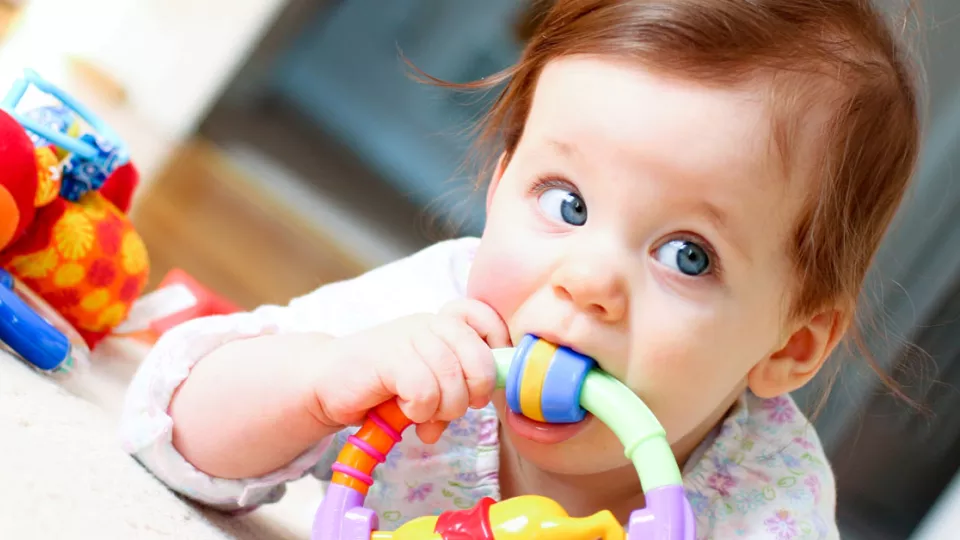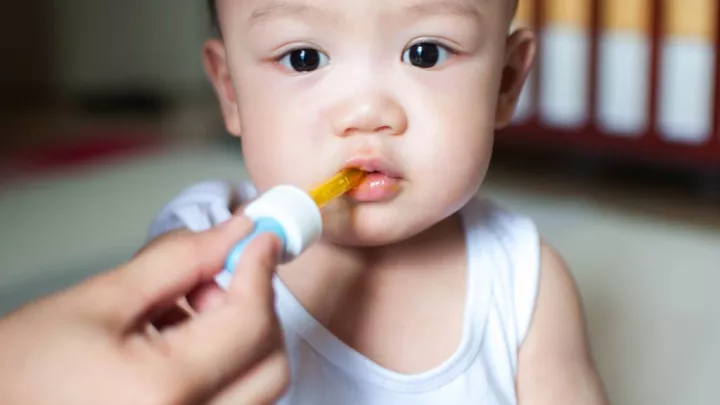
Your Infant is Teething: Know the Signs and Symptoms
Teething can be a time of great frustration for caregivers, in this post I will list some of the most common symptoms, explain how they relate to teething and share some insight on how to help soothe your little one during this potentially uncomfortable time.
When Does Teething Begin for Infants?
Teething usually starts around four to eight months with the lower front teeth and continues until 30-36 months of age when the last set of molars appear. During the teething period there are symptoms that include irritability, disrupted sleep, swelling or inflammation of the gums, drooling, loss of appetite, rash around the mouth, mild temperature, diarrhea, increased biting and gum-rubbing and even ear-rubbing. These symptoms were reported by 70-80 percent of parents according to an article from the British Dental Journal. So, why don’t all infants experience teething symptoms? Keep reading to find out.
Why Teething Symptoms May Be Confused with Cold Symptoms
Research has pointed out that teething begins around six months of age. This is the same time when an infant’s immunities they received from their mother, via the placenta, are diminishing. This means that the infant’s own immune system is becoming established. During this time, infants become vulnerable to minor infections. Because these two changes are taking place, the symptoms of teething can be confused with a minor illness or cold and visa versa. This explains why only 70-80 percent of parents reported teething symptoms of their infant; it’s very likely that parents of the remaining 20-30 percent associated the symptoms to a minor illness or cold.
Below is a list of commonly reported teething symptoms, with ways to help your infant at home and when to call the doctor:
- Irritability
- Drooling/Skin Rashes
- Coughing
- Biting and Gnawing
- Low Grade Fever
- Cheek rubbing and ear pulling
- Diarrhea
Irritability
This is caused by the discomfort of the teeth erupting through the gums. Often the first teeth and molars are the most uncomfortable.
How to help your infant’s irritability: Cuddle, cuddle, cuddle! Every baby can use some good cuddle time when they are having a hard time with teething. The extra time spent with your baby can help alleviate their pain, by providing feelings of being comforted and reassured.
Drooling/Skin Rashes
Teething can stimulate drooling and many babies drool a lot!
How to help your infant’s drooling: Excessive drooling can cause a rash around the mouth, cheeks, chin and neck area due to the extra bacteria on the skin from the saliva. Try to keep the area as clean and as dry as possible by periodically wiping the area. Applying a simple barrier cream can help with the dry, chapped and sore skin.
Coughing
The extra saliva produced during teething can cause an occasional cough or gag.
How to help your infant’s coughing: If your infant’s cough continues or is accompanied by a high fever and cold or flu symptoms, contact your infant’s pediatrician. The high fever with cold and flu symptoms is not related to teething, but is actually a sign that your infant is sick.
Biting and Gnawing
The counter pressure from biting on practically anything can alleviate the pressure from under the gums.
How to help your infant’s biting and gnawing: Anything cold works great! My best friend mixes water with the pouches of baby food and freezes them to make fruit and veggie popsicles. There are teething rings, chew beads and any commercially bought teething toys can help, especially when chilled or frozen.
Low Grade Fever
A low grade fever is defined and caused by the following:
- A temperature ranging from 98-100 degrees.
- It can be caused by an infant putting their unclean hands in their mouth.
If the fever reaches above 101 degrees or continues, contact your infant’s pediatrician because it may not be the teething but a more serious illness.
How to help your infant’s low grade fever: Use an age-appropriate pain medication and please consult your infant’s pediatrician and the medication label for correct dosage.
Cheek rubbing and ear pulling
This is caused by pain in the gums, which can travel to the cheek and ear, especially when the molars are erupting. Infants will rub those areas. Keep in mind that ear pulling or rubbing can also be a sign of an ear infection, please contact your infant’s pediatrician if this symptom continues or is accompanied with a high fever.
How to help your infant’s cheek rubbing and ear pulling: Try rubbing and massaging the gums with a clean finger for one to two minutes to help with the discomfort.
Teething and Diarrhea
Many believe that the increased saliva produced during teething can cause stool to become slightly loose.Keep in mind, diarrhea can be a sign of a more serious infection so contact your infant’s pediatrician if the stool becomes watery, because your infant could be at risk for dehydration. Contacting your infant’s pediatrician is especially important if the diarrhea is accompanied by vomiting or a high fever.
I hope the list of symptoms and ways you can help your infant will guide you through your infant’s teething phase. I also hope this helps ease the potential stress experienced by many parents. Just remember, that many symptoms we think are teething can be associated with illness, may be completely unrelated to teething and may need to be addressed by a physician.


